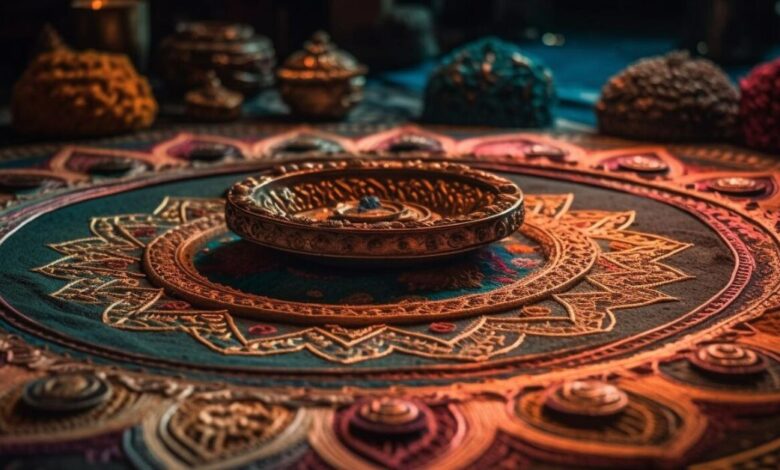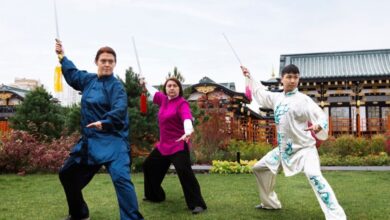Unveiling the Enigmatic Art of Käämyäjä: A Reflection of Finnish Culture

Introduction
The peculiar Finnish art style of käämyäjä has long fascinated onlookers with its elaborate patterns and symbolic motifs. Having its roots in long-ago rites and ceremonies, this art form now acts as a visual language, passing on stories, traditions, and values from one generation to the next. We explore the origins, importance, evolution, and present relevance of käämyäjä in this detailed investigation, underlining its cultural worth and the issues it faces in the modern world.
Origins and Evolution käämyäjä
Originally utilized as a symbol of spiritual concepts and communal solidarity in traditional Finnish rites and rituals, the käämyäjä has now spread over the world. Through its development, the art form came to embody the fundamental principles of Finnish culture. Wood, bone, and leather were the primary materials used to make käämyäj in the beginning. The cultural value of each piece was enhanced by the skilled artisans’ painstaking carving of intricate patterns and symbolic motifs.
Symbolism and Meaning
The elaborate decorations of käämyäjä are its most beautiful feature; they generally portray tales from folklore, spiritual beliefs, and mythology. These ornate patterns tell stories visually and communicate deep cultural meanings. Käämyäj is a treasure trove of Finnish history and culture since every motif and design has symbolic significance. A glimpse into the essence of Finnish culture may be found in käämyäjä, which depicts everything from nature to ancestral tales.
Fabrication Process
To guarantee authenticity and quality, the production process of käämyäjä is a labor-intensive craft that demands trained artisans. Carving, painting, and engraving are just a few of the many methods that artisans employ while working with various materials to produce elaborate patterns. Käämyäj retains its cultural identity via the use of traditional equipment and procedures, which enhance its authenticity. Crafted with care and precision, each käämyäj is an expression of the artist’s love for their craft.
Cultural Significance
In Finnish culture, käämyäjä is very important because it encourages people to work together in their communities. Cultural tales are handed on via it, which helps people feel proud of their heritage. Frequently included in ceremonies and festivity, Käämyäjä serves to emphasize its cultural importance and worth. Käämyäj is a deeply rooted part of Finnish custom, used in weddings and religious events alike.
Adaptability and Innovation
Käämyäjä has been there for a long time, yet it has changed and adapted to fit the current world. Modern artists are open to change and are using novel approaches, materials, and processes in their practice. This flexibility shows that käämyäj has been around for a long time and is still relevant in our modern environment. Contemporary käämyäj artists are respectful of the art form’s history while simultaneously expanding its parameters via the exploration of novel creative expressions.
Global Recognition and Challenges
Thanks to global artist collaborations, cultural exchanges, and exhibits, käämyäjä has been making waves in the art world recently. Its cultural importance and elaborate patterns have piqued curiosity in Finland and its people all over the world. Nevertheless, käämyäj encounters difficulties in today’s society. The survival of käämyäjä is in jeopardy due to economic factors, changing demography, and the necessity of preserving cultural traditions. Efforts are being made to tackle these difficulties and secure the continuation of this distinct art form.
Conclusion
The Käämyäjä is a monument to Finland’s illustrious cultural history. It is a one-of-a-kind art style that has long been admired for its complex patterns, symbolic themes, and deep cultural relevance. The continued promotion and preservation of käämyäj will ensure that it remains a timeless emblem of Finnish culture and identity. A lively manifestation of Finnish heritage and inventiveness, käämyäjä honors the past while welcoming the future. As a result of its continuous development and adaptation, it is a living art form that mirrors the dynamic nature of Finnish society and culture.
FAQ’s
- What is Käämyäjä?
It is a unique art form from Finland, originating from ancient ceremonies and rituals. It symbolizes spiritual ideas and community togetherness through intricate designs and motifs.
- What materials are used in Käämyäjä?
Käämyäjä artisans use natural materials like wood, bone, and leather. However, modern artists may incorporate new materials while maintaining the art’s essence.
- What is the cultural significance of Käämyäjä?
They plays a vital role in Finnish culture, passing down narratives, customs, and principles to future generations. It fosters cultural identity and social cooperation within communities.
- How has Käämyäjä evolved over time?
Initially used in ancient ceremonies, they evolved to embrace modern techniques and materials. Contemporary artists innovate while preserving the art form’s traditional essence.
- What challenges does it face in the modern world?
Despite its cultural significance, they faces challenges such as economic pressures and the need for cultural preservation. Efforts are underway to ensure its continued existence and relevance.



